Solar energy systems are becoming increasingly popular as an eco-friendly and cost-effective source of power. Grasping solar energy system components like panels, inverters, mounts, balance of system parts, battery storage, charge controllers, and energy storage is vital for utilizing clean energy.. In this article, we will delve into these essential components and their roles in solar energy systems.
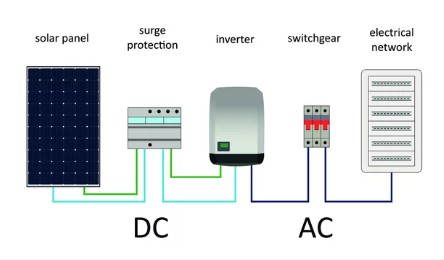
Solar Panels: The Core Component of Solar Energy Systems
The heart of any solar energy system, solar panels capture sunlight and convert it into electricity. These panels consist of photovoltaic (PV) cells, which work together to generate power when exposed to sunlight. Solar panels come in various types and sizes, designed to meet different efficiency and application requirements.
Types of Solar Panels:
There are three main types of solar panels used in solar energy systems: monocrystalline, polycrystalline, and thin-film. Monocrystalline panels have the highest efficiency and a single crystal structure, giving a dark appearance. Polycrystalline panels, made from multiple crystals, have lower efficiency and a bluish hue. Lastly, thin-film solar panels are made by applying a thin layer of photovoltaic material onto a substrate. While they are less efficient than crystalline panels, they offer greater flexibility and can be used in a wider range of applications.
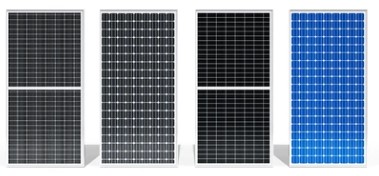
Panel Sizes and Power Output:
Solar panels come in different sizes, depending on the power output required for a particular installation. The most common size for residential solar installations is a 60-cell panel, which typically measures about 39 inches wide by 65 inches tall. These panels generally produce between 250 and 350 watts of power. Larger 72-cell panels are more common in commercial installations and produce between 350 and 450 watts of power. When selecting a solar panel size, it’s essential to consider the available space for installation and the total energy demand of the property.
Efficiency and Performance:
Solar panel efficiency refers to the amount of sunlight converted into usable electricity. Higher efficiency panels generate more power per square foot, allowing for fewer panels to be installed in limited spaces. It’s important to note that efficiency can be affected by factors such as temperature, shading, and panel orientation. To optimize the performance of your solar energy system, it’s crucial to choose panels with the right efficiency level for your specific needs and to ensure proper installation and maintenance.
In summary, solar panels are the core component of any solar energy system, and understanding the different types, sizes, and efficiency levels is essential for selecting the right panels for your installation. By choosing the appropriate solar panels for your specific requirements, you can ensure an efficient and reliable solar energy system.
Inverters: A Critical Component for Solar Energy Systems
Inverters play a critical role in converting the direct current (DC) electricity produced by solar panels into alternating current (AC) for use in homes and businesses. Two primary types of inverters exist: string inverters, which handle conversion for an entire array of solar panels, and microinverters, which operate on a per-panel basis, improving system efficiency.
String Inverters:
String inverters are the most common type of inverter used in solar energy systems. They work by connecting multiple solar panels in a series, creating a “string,” and converting the combined DC output of these panels into AC power. String inverters are typically more cost-effective and easier to install than microinverters. However, one downside to string inverters is that if one panel underperforms due to shading or debris, the performance of the entire string can be affected.

Microinverters:
Microinverters, on the other hand, are installed on each solar panel, converting the DC output of the individual panel into AC power. This setup allows for greater system efficiency, as the performance of one panel does not impact the others. Microinverters also enable more straightforward monitoring and maintenance, as they allow for the identification of underperforming panels quickly. While microinverters tend to be more expensive than string inverters initially, the increased efficiency and simplified maintenance can lead to long-term cost savings.
Hybrid Inverters:
Hybrid inverters combine string and microinverter features, allowing series and parallel panel connections. They offer more flexibility and integrate with battery storage, ideal for storing excess solar energy.
Inverters convert solar panel-produced DC electricity into AC power. Knowing string, micro, and hybrid inverter differences is crucial for choosing the right one, ensuring solar installation efficiency and meeting energy demands.
Mounting Systems: Ensuring Secure and Stable Solar Panel Installation
Proper mounting systems are necessary for securely holding solar panels in place. These systems must be strong and durable, as they endure various weather conditions. Mounting systems include roof-mounted and ground-mounted options, depending on the available space and the installation’s specific needs.
Roof-Mounted Systems:
Roof-mounted systems are the most common type of mounting option for residential and commercial solar installations. These systems attach solar panels directly to the roof, making use of existing structures and maximizing available space. Roof-mounted systems can be further classified into two types: flush mounts and tilt mounts.
Flush mounts are the simplest and most cost-effective option, attaching panels parallel to the roof surface. However, flush mounts may not provide the optimal angle for sunlight exposure, potentially impacting the system’s efficiency.
Tilt mounts, on the other hand, allow for adjusting the angle of the solar panels, enabling them to capture sunlight more efficiently. While tilt mounts can increase energy production, they may also be more expensive and require additional structural support.
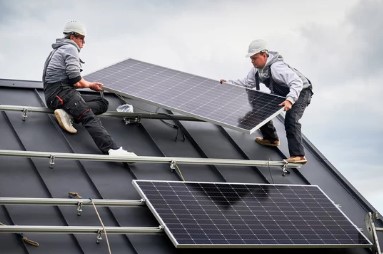
Ground-Mounted Systems:
Ground-mounted systems are an alternative for properties with limited roof space or unsuitable roof conditions. These systems install solar panels on a frame or racking system anchored to the ground. Ground-mounted systems offer greater flexibility in panel orientation and angle, often resulting in higher efficiency.
There are two primary types of ground-mounted systems: fixed-tilt and tracking systems. Fixed-tilt systems position solar panels at a set angle, while tracking systems automatically adjust the panel angle throughout the day, following the sun’s movement to maximize energy production.
Building-Integrated Photovoltaics (BIPV):
Another mounting option is building-integrated photovoltaics (BIPV), which incorporate solar panels directly into a building’s structure, such as walls or windows. BIPV systems offer a sleek and modern aesthetic while generating clean energy. However, they may be less efficient and more expensive than traditional mounting options.
In summary, mounting systems play a crucial role in ensuring secure and stable solar panel installation. Understanding the differences between roof-mounted, ground-mounted, and building-integrated photovoltaic systems is essential for selecting the best mounting option for your solar energy system. By choosing the appropriate mounting system, you can optimize energy production and ensure the longevity of your solar installation.
Balance of System Components: Essential Parts for a Smooth-Running Solar Energy System
The balance of system components includes essential parts such as wiring, connectors, and charge controllers. These components ensure a smooth and efficient flow of electricity between the solar panels, inverters, and battery storage systems. Charge controllers, in particular, regulate the flow of electricity, preventing overcharging and prolonging battery life.
Wiring and Connectors:
Wiring and connectors play a vital role in transmitting electricity from solar panels to the rest of the system. High-quality wiring and connectors are crucial for minimizing energy loss and ensuring the system’s safety. Solar energy systems typically use two types of wiring: DC wiring, which connects solar panels to the inverter or charge controller, and AC wiring, which connects the inverter to the electrical panel or battery storage system.
Connectors join the wiring and various components, allowing for secure and efficient energy transfer. There are several types of connectors used in solar energy systems, including MC4 connectors, which are the industry standard for connecting solar panels to the rest of the system.
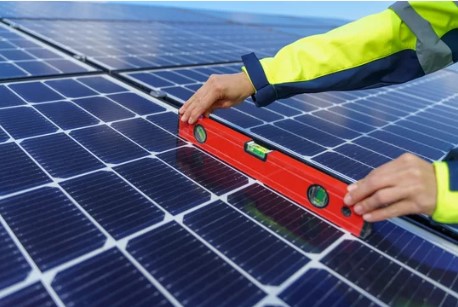
Charge Controllers:
Charge controllers regulate the flow of electricity between solar panels and battery storage systems. They protect batteries from overcharging and ensure optimal charging conditions, prolonging battery life and maximizing efficiency. There are two main types of charge controllers: pulse width modulation (PWM) controllers and maximum power point tracking (MPPT) controllers.
PWM controllers are simpler and more affordable, but they may not be as efficient as MPPT controllers. MPPT controllers continuously adjust the voltage to find the maximum power point, resulting in more efficient energy transfer and increased system performance.
Safety Devices:
Safety devices are another essential component of a well-designed solar energy system. These devices protect the system and its users from potential hazards, such as electrical surges, short circuits, or fires. Key safety devices include fuses, circuit breakers, and disconnect switches.
Fuses and circuit breakers protect the system from overcurrent conditions, while disconnect switches allow for the safe isolation of individual components or the entire system during maintenance or emergencies.
The balance of system components, including wiring, connectors, charge controllers, and safety devices, are crucial for a smooth and efficient solar energy system. By selecting high-quality components and ensuring proper installation, you can optimize the performance and safety of your solar installation.
Energy Storage Solutions: Harnessing Solar Power 24/7
Energy storage solutions like battery systems store excess daytime energy for nighttime or cloudy day use. Different batteries, such as lead-acid and lithium-ion, have unique advantages and drawbacks.
Lead-Acid Batteries:
Lead-acid batteries are a reliable, affordable energy storage solution. Two types exist: flooded lead-acid (FLA) and sealed lead-acid (SLA). FLA batteries need regular maintenance but may last longer if cared for. SLA batteries are maintenance-free but may have a shorter lifespan.
Lithium-Ion Batteries:
Lithium-ion batteries are popular for solar systems due to higher efficiency, longer lifespan, and lower maintenance needs. They have a higher energy density but are more expensive upfront. Additional safety precautions, like a battery management system (BMS), may be required.
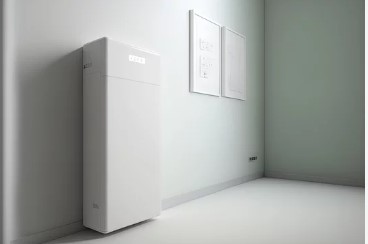
Flow Batteries:
Flow batteries, an emerging solution, store energy in liquid electrolytes pumped through a cell stack. They offer long cycle life, quick response times, and scalable capacity. However, they are typically larger and more complex, suited for large-scale or commercial installations.
Choosing the Right Energy Storage Solution:
Selecting the right energy storage solution depends on factors like energy needs, space, budget, and maintenance preferences. Evaluate the advantages and drawbacks of each battery type, as well as required components like a BMS or inverter charger, to find the best fit.
Energy storage solutions are crucial for harnessing solar power during nighttime or cloudy days. By understanding different battery types, you can optimize your solar energy system’s performance and ensure constant access to clean, renewable energy.
Conclusion
Understanding the components of a solar energy system, including solar panels, inverters, mounting systems, balance of system components, and energy storage solutions, is crucial for effectively harnessing solar power. Each component plays an essential role in ensuring a reliable and efficient solar energy system.